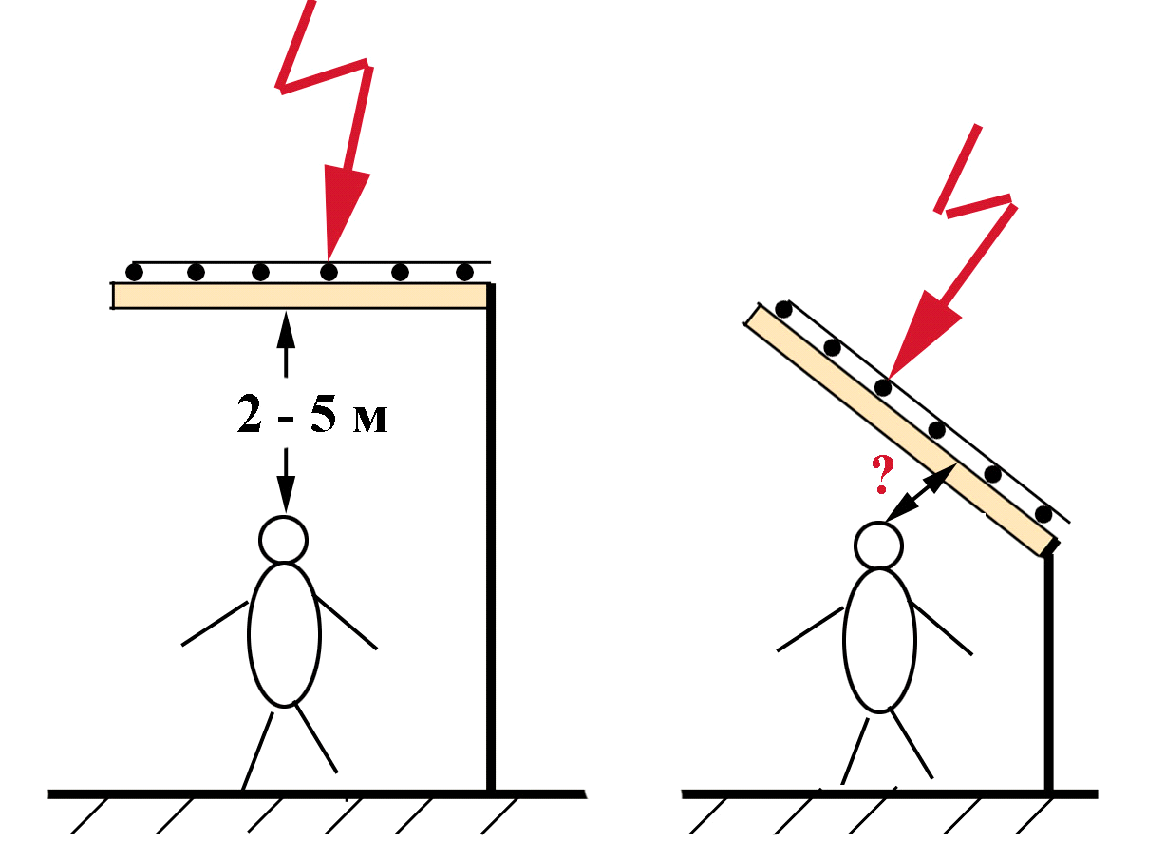This material is the 6th publication from the series of articles by Eduard Meerovich Bazelyan "Everything about lightning rod protection zones". In this small interconnected materials the author reveals the origin of lightning rod protection zones, clarifies their shape and geometric sizes, frankly tells about the convenience of lightning protection design by zones and equally frankly reveals the disadvantages of such project solutions.
Almost every designer will tell that lightning protection mesh is more convenient than a single standing lightning rod. You don't have to count anything for it - cells 6x6m for the protection of the second category and 12x12 for the third. No worries.
But there is still one problem - you have to attentively read the manual in AD 34.21.122-87. Point 2.11 of this manual states: "Protection from direct lightning strikes of buildings and structures of II category with non-metal roof should be executed by separate or installed on the protected object rod or catenary wire lightning rods. With a pitch of the roof not more than 1:8 lightning protection mesh can be used..." It is absolutely clear that the regulatory document prescribes to use mesh only for non-metal roofs, and reinforce concrete slab is not one. It turns out that not only designers but the specialists of Gostekhnadzor are not always attentive. You should be more attentive for the real assignment of mesh.

Lighting with the potential of about 100 MB can easily break through any dielectric roof striking into the equipment grounded under it, into the electric circuit of low voltage or people inside. The grounded mesh above such roof is in fact a multiple catenary wire lightning rod. Its elevant to several meters above the grounded elements on the top level of the building will provide a reliable protection from direct lightning strikes. It is now clear why a maximally admissible roof pitch (1;8) is regulated in p.2.11. With great pitches, the insulation distance between the mesh and the protected elements reduce significantly (fig. 9) sharply reducing their reliability and increasing the probability of a back flashover.
It is the sixth part of the cycle of articles "Everything about lightning protection zones". To read the full material, you must register on the site.
Do you have any questions on calculation of lightning protection or grounding? Please contact our ZANDZ Technical center!
See also:
Related Articles:

